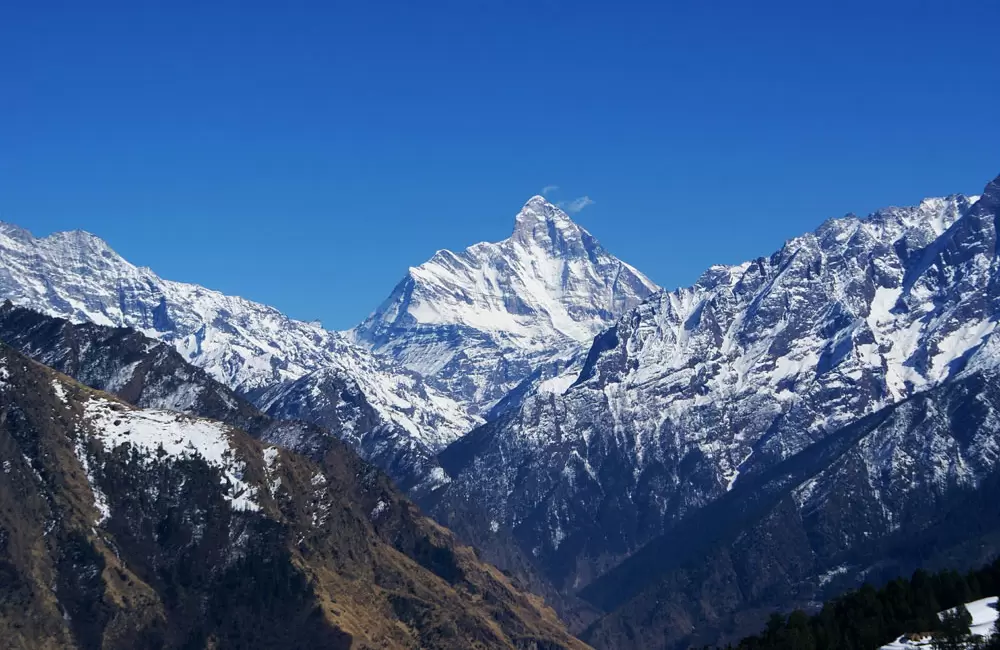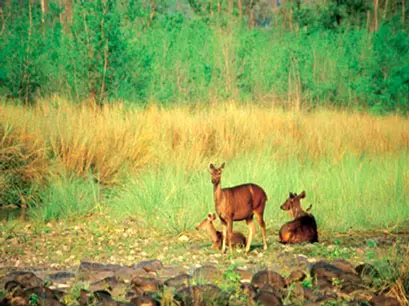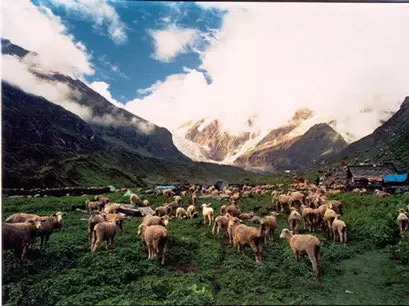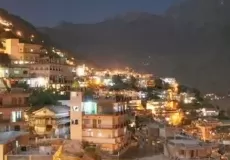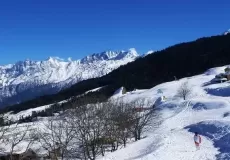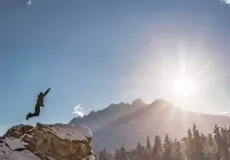About Nanda Devi National Park
The Nanda Devi national park lies in central Uttarakhand across the main crest of the Great Himalayan Range. The core sanctuary covers an area of 380 sq km. This is a part of the larger national park measuring 630 sq km, which also contains the Rishi Ganga gorge and its surroundings.
Nanda Devi National Park is an outstanding mountain wilderness with few if any parallels elsewhere in the Himalayas on account of its concentration of high peaks and glaciers lying within a range of near-pristine habitats. It lies within a biogeographical transition zone between the Western and Eastern Himalayas and supports a variety of threatened and uncommon species of large mammals.
The beautiful surroundings with abundant flora and fauna like Brahma-Kamal and Bharal (blue mountain goat) make this a sanctuary of nature. You can also see snow leapords in this region.
In 1982 access to trekkers into the Nanda Devi National Park was banned to protect its biodiversity. The Nanda Devi National Park, which has been declared a world heritage site, has been partially opened recently for restricted number of tourist.
History of Nanda Devi National Park
The Nanda Devi basin was declared as Nanda Devi Sanctuary in 1939. An area of 630 sq. Km. was added as Nanda Devi National Park in the year 1982 which is now a part and core zone of Nanda Devi Biosphere Reserve. The Park became a world heritage site in the year 1988.
Nanda Devi National Park: A UNESCO's World Heritage Site
Nanda Devi National Park characterized by an exotic Himalayan flora and fauna was declared as a World Heritage Site by UNESCO in 1988. In the year 2004, Nanda Devi Park was further notified as a World Network of Biosphere Reserve by UNESCO. This park is protected by a buffer zone that covers more than 5,000 km2 area.
Layout of the Nanda Devi Sanctuary
The Nanda Devi Sanctuary can be divided into two parts, Inner and Outer. Together, they are surrounded by the main Sanctuary Wall, which forms a roughly square outline, with high, continuous ridges on the north, east, and south sides. On the west side, less high but still imposing ridges drop from the north and south toward the Rishi Ganga Gorge, which drains the Sanctuary towards the west.
The Inner Sanctuary occupies roughly the eastern two-thirds of the total area, and contains Nanda Devi itself and the two major glaciers flanking the peak, the Uttari (north) Rishi Glacier and the Dakshni (south) Rishi Glacier. These are fed by the smaller Uttari Nanda Devi and Dakshni Nanda Devi Glaciers respectively. The first recorded entry of humans into the Inner Sanctuary was by Eric Shipton and H. W. Tilman in 1934, via the Rishi Gorge.
The Outer Sanctuary occupies the western third of the total Sanctuary and is separated from the Inner Sanctuary by high ridges, through which flows the Rishi Ganga. It is split in two by the Rishi Ganga; on the north side lies the Ramani Glacier, flowing down from the slopes of Dunagiri and Changabang, and on the south lies the Trisul Glacier, flowing from the peak of the same name. This portion of the Sanctuary is accessible to the outside (though requiring the crossing of a 4,000 m (13,000 ft) pass). The first serious climbing expedition to pass through the Outer Sanctuary was that of T. G. Longstaff, who climbed Trisul I in 1907 via the eponymous glacier.
Peaks around National Park
Some of the important peaks encircling the Nanda Devi National Park are Dunagiri (7066mt), Changband (6864mt), Kalnka (6931mt) Rishi pahar (6992 mt) Mangraon (6765mt), Nanda Khat (6631 mt), Maiktoli (6803 mt), Mrigthuni (6655mt), Trishul-1 (7120mt), Trishul-II (6319mt), Bethartoli Himal (6352mt) and Nandadevi East (7434 mt.).
Trek Route to Nanda Devi National Park
Trek for the park negotiates a steep assent at high altitude zones within 13 km route from 2000 mt. at village Lata to 4250 mts to Dharasi - the topmost point.
Nanda Devi National Park Travel Tips
- Visitors number and movement: The visitors will move in groups. Each group will consist of maximum of five visitors. Not more than two groups are permitted in one day and not more than four groups will be permitted in one week. One registered guide will accompany every five visitors. Visitors only above 14 years will be allowed to go inside the park. It will be mandatory for all the tourists to obey and observe all the provisions of wildlife protection act inside the park area.
- Medical fitness: Since the terrain is hilly and arduous, a visitor should get himself medically checked and should take all precautionary measures on his own.
Best time of visit
The park will remain open for a period of six months from 1st May and close on 31st October. The best time to visit is from 15th June to 15th September.
For More details you can contact:
Joshimath- D.F.O's Office (on the Joshimath Auli road about 1 km from main Bazar).
What is Nanda Devi National Park famous for?
Nanda Devi National Park is famous among tourist as Natural beauty and flowers.
Nanda Devi National Park is popular destination for following activities/ interests - Adventure, Bird Watching, National Parks and Wildlife Sanctuaries, Trekking, UNESCO World Heritage Sites, Wildlife Tourism.
